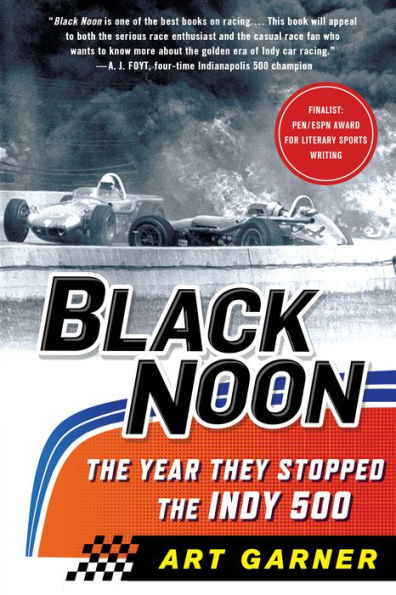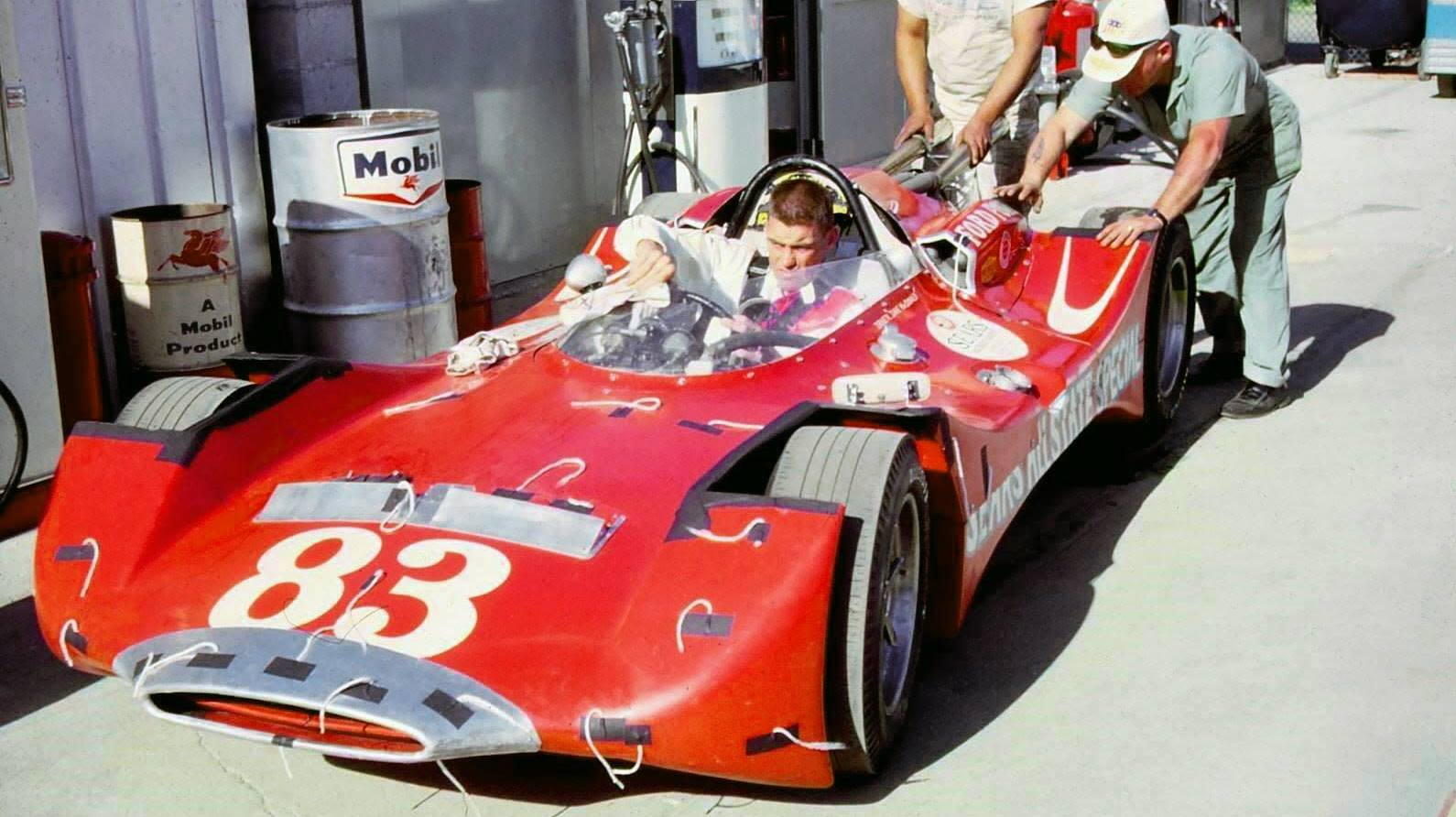Black Noon Handles The Worst Indy 500 Catastrophe With Grace
We may receive a commission on purchases made from links.
On May 30, 1964, a red flag waved at Indianapolis on the second lap of the 500—the first time the iconic race was stopped for anything but weather. When the smoke cleared, drivers Eddie Sachs and Dave MacDonald were dead. It was day that still serves as a black mark in the Indy 500's history, but there was so much more to that day than we often remember. In Black Noon, Art Garner reminds us that this was more than just a tragedy: it was a complex series of events, the result of contentious politics, burgeoning technologies, and interpersonal relationships, that ultimately resulted in the loss of two promising lives.
(It lives! Welcome back to the Jalopnik Race Car Book Club, where we all get together to read books about racing and you send in all your spicy hot takes. In honor of being trapped indoors, I've made the reading a little more frequent; every two weeks instead of every month. This week, we're looking at Black Noon: The Year They Stopped The Indy 500 by Art Garner, the story of the first time the Indianapolis 500 was red-flagged because of an accident.)

There's always so much more to a race than just the race itself, and one of the best things about Black Noon is the fact that Garner takes all the loose strings of history and weaves them into a tapestry that makes sense. It was the last 500 won by a front-engined "roadster" as rear-engined cars became all the rage. There was a massive tire battle between Firestone, Goodyear, and Dunlop, with intra-brand politics carving massive divisions between, say, one Goodyear team versus another. Many teams debated whether to use gasoline or methanol in their cars on race day. Everyone was experimenting with new technology in terms of aerodynamics, tire size and compound, fuel tank size, and what material the car would be made of. 1964 was a tipping point for the way teams and drivers conceptualized speed.
In the midst of it all was rookie Dave MacDonald and "the clown prince of racing" Eddie Sachs.
MacDonald was a road racing champion best known for being one of Carroll Shelby's right-hand men. He dominated race tracks in Corvettes, Cobras, and King Cobras. In his four-year career, he won over 50 races. When he was hired by land speed record holder Mickey Thompson to drive one of the wild low-profile prototype cars in the 500, it seemed a natural career progression to agree. It was a car rife with problems right from the very start, and Garner suggests that MacDonald continued to get behind the wheel of it more out of obligation than anything else.
Sachs, on the other hand, knew Indianapolis well, having competed there eight times along with securing two pole positions. His career started out in USAC sprint cars, with winning the 500 being his ultimate goal—once he achieved that, he said, he would gladly retire. In 1964, he was racing with American Red Ball, confident that it would be his time to shine. The impromptu eulogy given by chief announcer Sid Collins sums Sachs up best:
I'm an admittedly voracious reader, but this is one of the books that actually made me slow down. The center section of the book focuses largely on practice and qualifying, and it's next to impossible to rush through that section. There's so much happening: drivers hitting the track and setting unofficial records, team members dealing with their own dramas, bits of history, the complicated weeks-long practice and qualifying structure for the 500—it's a lot.
I was expecting the book to focus more specifically on Sachs and MacDonald, but Art Garner paints a much larger picture. These are the two men at the forefront of our narrative, yes. But you can't quite grasp the full story without knowing about Colin Chapman, Dan Gurney, A.J. Foyt, Mickey Thompson, Andy Granatelli, and more. Garner does a damn good job guiding you to an off-shoot of the narrative path you're on to give you the context you need. But if you're largely unfamiliar with all of the history here, it can be a lot to take in all at once.
But that doesn't mean that's a bad thing. In some ways, Black Noon reminded me of falling down a Wikipedia hole, where you just click through a link to gain the context you need for something you may not have known about before. Garner does it all manually, and to great effect. You learn exactly as much as you need to know to understand. There isn't a detail in the book that you don't need to know.
Ultimately, this is a book that requires you to pay attention in order to understand the historical intricacies, but it's damn good because of that. This is the kind of project any motorsport journalist should be jealous of: it's informative, well-written, and loaded with the kind of emotion you'd expect from one of Shakespeare's tragedies. When you hit race day, you're just overwhelmed with a sense of inevitability. You know what's going to happen, just like you know what's going to happen to Hamlet, Macbeth, or Romeo. But the best author will still turn that inevitability into a gut-punch of emotion. Art Garner does just that.
In short, get out there and read this immediately if you haven't already.
But what did the rest of y'all think? Here's some insight from Irving Warden:
I found this to be a well-written book, not because it is a stylistic marvel (whatever that is), but because it is good storytelling. Garner manages to pull together many vignettes, episodes, or whatever you want to call them, to tell the story of the 1964 Indy 500 in a manner that is neither uneven nor jerky.
For an ROF (Retired Old Fart) like me, this is a reminder of how much car racing has changed. Eddie Sachs and Dave McDonald are, of course, the tragic heroes of this piece but this book gives a good look at the other people involved in this star-crossed event.
it is impossible to compare racing drivers of different eras, but it seems certain that few races have had a collection of driving talent to match the 1964 Indy 500, including A.J. Foyt, Dan Gurney, Jack Brabham, Parnelli Jones, Jim Clark and Bobby Unser, along with many other drivers of slightly less renown outside of USAC racing, like Roger Ward, Lloyd Ruby, Jim Hurtubise, etc.Two past and future World Champions, Graham Hill and Mario Andretti, did not race after passing on an opportunity to drive one of Mickey Thompson's cars, similar to the one Dave McDonald drove.
The list above is just the drivers. Other luminaries involved in this race in other capacities include Colin Chapman, J.C. Agajanian, Humpy Wheeler, Andy Granatelli, Roger Penske, A.J. Watson, Mickey Thompson, Smokey Yunick, etc.
This was a transition period for Indy cars and there were conventional roadsters, rear-engined cars inspired by Formula racers, and front-engined 4WD Novis with supercharged three-liter V8a on the grid. Smokey Yunick showed up with a "sidecar" design that had the driver seated in a separate "capsule" to the left of the main body of the car containing the drive train, but was not able to qualify for the race.
The dangers of auto racing are, of course, a part of any story about this disastrous race. One of the most interesting points raised in this book is that it came after five straight years without a fatality in the race, which was "...the longest stretch of time in Speedway history without a death in the race..."
The people who participate in motor racing today are as good at driving, designing, building, maintaining, etc., race cars as any who ever lived, but each racing discipline, Indy Car, F1, NASCAR, etc. seems homogenized compared to events of the past like the 1964 Indy 500. Read this book and make your own comparisons, it is much more than just the story of a fiery crash.
And that's all we have for this month's Jalopnik Race Car Book Club! Make sure you tune in again on August 23, 2020. We're going to be reading Driven: A Pioneer for Women in Motorsport by Rosemary Smith. And don't forget to drop those hot takes (and recommendations) in the comments or at elizablackstock [at] gmail [dot] com!
